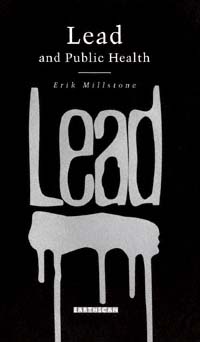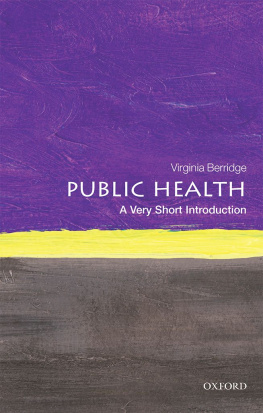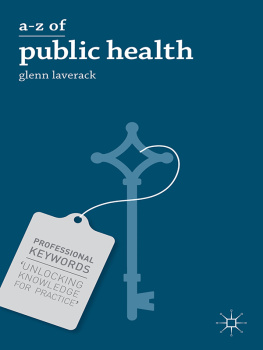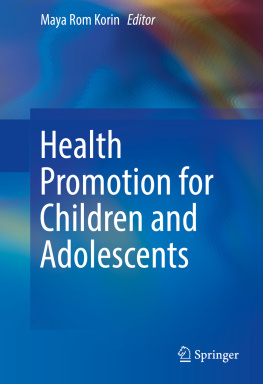Cover

| title | : | Lead and Public Health : The Dangers for Children |
| author | : | Millstone, Erik. |
| publisher | : | Earthscan Ltd. |
| isbn10 | asin | : | 1853833118 |
| print isbn13 | : | 9781853833113 |
| ebook isbn13 | : | 9780585377858 |
| language | : | English |
| subject | Lead poisoning--Risk factors, Lead poisoning in children--Risk factors, Lead--Environmental aspects, Lead Poisoning, Environmental Exposure, Public Policy--United States, Public Policy--Great Britain. |
| publication date | : | 1997 |
| lcc | : | RA1231.L4M53 1997eb |
| ddc | : | 615.9/25688 |
| subject | : | Lead poisoning--Risk factors, Lead poisoning in children--Risk factors, Lead--Environmental aspects, Lead Poisoning, Environmental Exposure, Public Policy--United States, Public Policy--Great Britain. |
Page i
Lead and Public Health:
the dangers for children
Erik Millstone
EARTHSCAN
Earthscan Publications Ltd, London
Page ii
Acknowledgement
I am grateful to John Russell for sharing the results of his researches with me.
Page iii
Table of Contents
| List of Figures | v |
| List of Tables | vii |
| Abbreviations and Acronyms | viii |
|
|
| 1 Lead: the Threat to Human Health | 1 |
| 2 Is Lead Poisonous? | 7 |
| What are the toxic effects? | 8 |
| Where does lead cause damage? | 9 |
| How body lead loads can be estimated | 9 |
| Use of blood-lead measurements | 11 |
| Units | 13 |
| Collecting blood samples | 13 |
| Use of tooth lead measurements | 14 |
| Use of hair lead measurements | 15 |
| Debates about lead toxicity | 16 |
| Is there a safe threshold for lead? | 21 |
| Essentiality | 22 |
|
|
| 3 The Neurotoxicity of Lead | 24 |
| Lead and neurotoxicity: the crucial questions | 25 |
| Disputes about the meaning of IQ scores | 26 |
| The meaning of IQ scores | 28 |
| Confounding factors | 29 |
| Methods of data analysis | 30 |
| Statistical power and sample size | 31 |
| Statistical analyses | 31 |
| Research strategies in lead neurotoxicology | 32 |
| Clinical studies of children with high lead levels | 33 |
| Studies of mentally retarded or behaviourally deviant children | 33 |
| Therapeutic chelation studies | 34 |
| Smelter studies | 36 |
| Interim summary | 37 |
| General population cross-sectional studies | 37 |
| Cross-sectional studies: a summary | 48 |
| Meta-analyses of the results of cross-sectional studies | 48 |
| Meta-analysis: a summary | 54 |
| Is the link a causal one? | 55 |
| General population prospective and longitudinal studies | 55 |
|
Page iv
|
| Five prospective and longitudinal studies | 57 |
| Summary and interpretation | 70 |
| Coda | 73 |
| 4 Lead in the Human Body and the Environment | 74 |
| Blood lead levels in the US | 75 |
| Modelling environmental and blood lead | 76 |
| The NHANES studies in the US | 77 |
| Blood lead levels in the UK | 82 |
| Acute lead poisoning in the UK | 94 |
| Blood lead levels in six-year-old children in the UK | 94 |
| Lead contamination of the environment in the US and the UK | 95 |
| Lead in drinking water in the US | 97 |
| Lead in paint and dust in the US | 101 |
| The population exposed in the US | 101 |
| Lead in dust and soil in the US | 103 |
| Lead in air in the US | 104 |
| Lead in food in the US | 106 |
| Lead in drinking water in the UK | 108 |
| Lead in paint, dust and soil in the UK | 115 |
| Lead in the air in the UK | 121 |
| Lead in food in the UK | 124 |
| Conclusion | 127 |
|
|
| 5 Government Strategies for Controlling Lead | 129 |
| US government strategy | 129 |
| UK government strategy | 131 |
| US policy on blood lead targets | 136 |
| UK policy on blood lead targets | 140 |
| Controlling lead in drinking water in the US | 144 |
| Controlling lead in drinking water in the UK | 148 |
| To flush or not to flush, that is the question | 151 |
| Treating water for plumbosolvency | 152 |
| Lead pipe replacement policies in the UK | 153 |
| Lead pipe replacement and battery recycling | 155 |
| Policy on lead solder in water supplies | 155 |
| Controlling leaded paint in the US | 156 |
| Controlling lead in paint in the UK | 161 |
|
|
| 6 Reducing the Lead Burden: Past Lessons and Future Progress | 169 |
|
|
| Notes | 179 |
|
Page v
List of Figures
| 1.1 Lowest observed effect levels of inorganic lead in children | 4 |
| 2.1 Illustration of some of the main compartments of the body in which lead may have a significant presence | 10 |
| 2.2 Childhood blood levels considered elevated by the Centre for Disease Control and the Public Health Service - 1965 to 1996 | 17 |
| 3.1 Ability score (means and 95 per cent confidence intervals) for ten groups of children ordered by blood lead | 46 |
| 3.2 The meta-analysis of ten cross-sectional studies by the WHO's IPCS | 54 |
| 3.3 Mean MDI scores in infants at four ages as a function of their umbilical cord blood levels | 60 |
| 3.4 Performance IQ plotted against average lifetime blood lead levels for 253 children aged 6 1/2 in Cincinnati | 64 |
| 3.5 Lifetime average blood lead concentrations and IQ scores at the age of seven amongst children in Port Pirie | 68 |
| 3.6 A meta-analysis of mean blood lead and full-scale IQ (mean changes and 95 per cent confidence intervals) |
Next page









